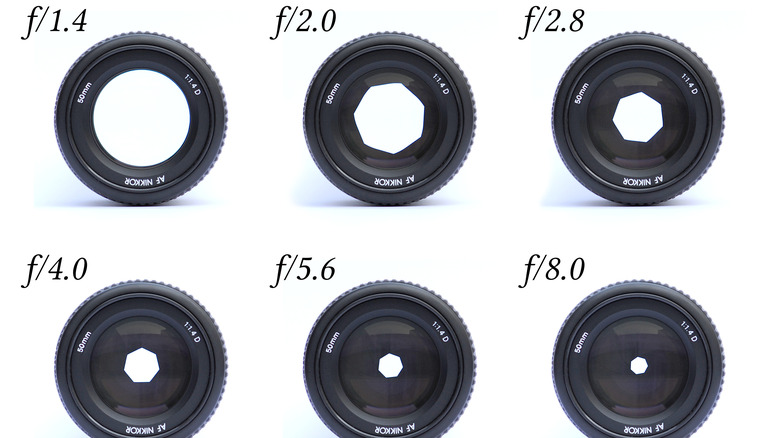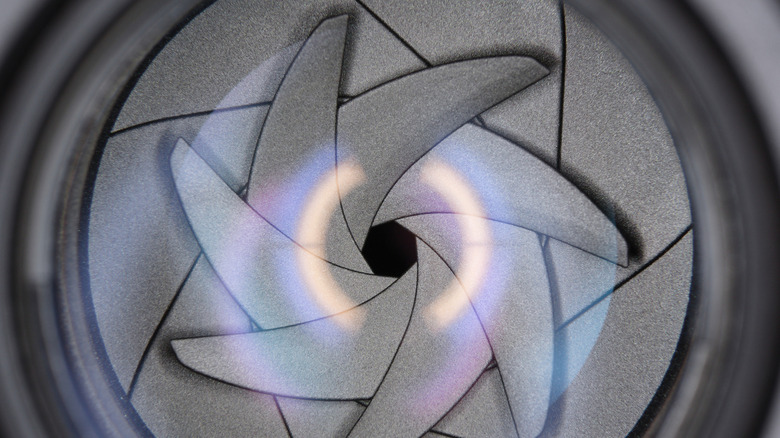Aperture And F-Stop In Photography Explained
Photography has undergone a remarkable transformation in the last half century. Steven Sasson developed the first digital camera for Eastman Kodak in the mid-'70s, but that model was larger than modern camcorders and stored images on a cassette tape. Sony's Cybershot cameras were the first to have HD video capability in 2010, and Google's Pixel 8 uses Artificial Intelligence to boost its photo and video performance. Despite the ubiquity of powerful smartphone cameras, serious amateur photographers and professionals still rely on cameras with interchangeable lenses to do their heavy lifting. Of my two-plus decades in journalism, more than 1/4 of that time was spent as a sports and music photographer, during which I photographed Formula 1 champions, Rock and Roll Hall of Fame musicians, world-famous actors, and even a sitting U.S. President.
Professional photographers traditionally use single-lens reflex cameras, which use a mirror to reflect images from the lens onto film (traditional SLR) or a digital sensor (DSLR). Nikon recently announced it was abandoning SLR cameras in favor of the mirrorless format, which focuses the image from the lens directly on the sensor. Throughout these evolutions in camera technology, terminology has remained consistent. Two terms that are common in photography are aperture and f-stop, but what do they mean and how does knowing about aperture and f-stop help you take better photos?
[Featured image by Koeepik via Wikimedia Commons|Cropped and scaled|CC-By 4.0]
F-stop is the numerical expression of lens aperture
Aperture refers to the size of the opening in the lens. It's controlled by a series of rotating blades that move in a way that allows varying amounts of light to pass through to the film or sensor. F-stop is a consistent way to measure lens aperture, and helps photographers control exposure and depth of field. It is noted with an f followed by a slash and number, for example f/2.8. Lower numbers denote larger openings, and they allow photographers to take pictures in low light conditions. Taking a photo with a low f-stop also gives a shallow depth of field, where the portion of the subject that is in focus is relatively short.
Taking photos at a higher f-stop requires a faster shutter speed to produce the proper exposure, but will keep much more of what you're shooting in focus. Large apertures are popular with portrait photographers who want the background blur effect known as bokeh. Event photographers tend to shoot with narrower apertures to make for crisper photos, but have to use faster shutter speeds along with a higher ISO setting or film to balance out the exposure. Taking good photos requires a balance between shutter speed, f-stop, and ISO, although most modern digital cameras allow you to shoot with automatic ISO. This allows you to focus (pun intended) on the shutter speed and aperture and let your camera ensure the proper exposure.
[Featured image by D-Kuru via Wikimedia Commons|Cropped and scaled|CC-By 4.0]

